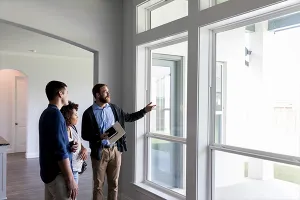Multicultural buyers have been important to the health of today’s housing market. Over the next decade, as more Baby Boomers put their homes on the market, and population shifts continue across the U.S., the role of multicultural buyers will become even more significant. Hispanics and Asians comprise the largest segments of tomorrow’s buyers. Are you ready to sell to them now and grow your business with them in the future?
Most Baby Boomers are White Non-Hispanic and African American. However, a sea change is coming in the next two generations. Since the 1990s, the United States has experienced the largest wave of immigration in its history. Today, Asians and Hispanics make up about one in four Generation Xers (born 1966 to 1985) and Millennials (born 1986 to 2005). And by 2050, over one in three U.S. residents is projected to be Hispanic or Asian.
The Face of Tomorrow’s Home Buyers
In 2007, minorities and immigrants made up 35 percent and 19 percent, respectively, of the first-time buyer market. Factors indicate they will be very important to tomorrow’s housing market:
Multicultural buyers will continue to seek buying opportunities in today’s soft market. “Though most potential first-time buyers are on the fence about buying a home, multicultural buyers, on average, are less so,” says Oscar Gonzales, principal of the Gonzales Group, a firm that provides analysis of demographic and economic trends for the real estate industry.
Households headed by children of immigrants aged 25-64 typically have higher incomes than any other native- or foreign-born household segments in that age group, states the Joint Center for Household Studies at Harvard University’s Kennedy Center. Today and over the next fifty years, these will be second-generation Hispanics and Asians.
The buying power of Hispanics and Asians is expected to grow faster than the rest of the population, in the near term. Buying power, defined as total post-tax income, for Hispanics and Asians more than doubled the growth rate for the total U.S. population between 1990 and 2009, according to the Selig Center for Economic Growth at the University of Georgia.
Financing Hurdles
As predominantly first- and second-generation residents, Asians and Hispanics are often closer to their country of origin’s cultural roots than are most Americans. Cultural attitudes toward borrowing and a lack of experience with financial institutions have created the biggest barrier to buying a home—knowing how to navigate the mortgage process. In serving these markets, you should know:
Debt is seen as shameful in many Latin American and Asian countries. Often these sentiments are carried to the United States. Foreign-born buyers may be very wary of taking on a mortgage.
First- and second-generation Hispanics and Asians may not have a credit history they can provide to the lender. Because of this bias against borrowing, your buyers may have had little experience dealing with financial institutions—and possess no credit cards.
Funds for down payments, or even mortgage payments, may come from the buyers’ extended family, and even from abroad. Gonzales notes that sometimes the people making the down payment are the buyers’ extended family.
Major lenders may turn away your immigrant buyers. “Your clients may meet all the financial criteria and have an ample down payment, but be turned away by major lenders simply because they don’t have a credit history,” says Gonzales.
Breaking Barriers
The agent’s role in clearing these obstacles is to be both an educator and a trusted advisor.
Start with Real Estate 101. If your clients have no experience purchasing real estate in the U.S., walk them through the entire process. Discuss your role and duties to them as their representative in the buying process.
Explain that most U.S. home buyers take out mortgages. Help your clients understand how mortgages work, and discuss the process of obtaining one. Ask them about the source of their down payment funds, and explain the documentation they’ll need if the money has come from overseas. Also discuss the impact of credit history on borrowing rates.
Go the extra mile to find a lender that will work with them. Regional and community banks as well as credit unions are more likely to be open to the needs of borrowers who don’t fit the traditional requirements. Establish a network of contacts with lending officers at small financial institutions and educate them on the value of having multicultural borrowers.
Language and Cultural Styles
While hiring multi-lingual agents or assistants is ideal, language should not be a barrier to dealings with most Asian and Hispanic clients. “For the most part, multicultural buyers’ command of the English language is generally strong,” points out Gonzales. Don’t assume that documents have to be translated into your clients’ native tongue. Focus instead on explaining the meaning and intent of the documents.
Working with multicultural clients will require a sensitivity to non-Western styles of communication including gestures, body language, personal space boundaries, and observance of social hierarchy. Anthropologist Edwin Hall’s concept of high and low context cultures offers a useful framework for understanding differences in cross-cultural communication.
Low context societies communicate informally, are loose in how business contacts are addressed, and rely heavily on written contracts to legitimize business agreements.
High context societies have a heightened degree of formality in business practices, hierarchical social relationships, and require extra communication time to establish trust between parties doing business.
The U.S. is a low context culture. Most countries in Asia and Central and South America are high context cultures. Being sensitive to contextual differences may be critical to gaining the trust of your multicultural clients.
Including the Entire (Extended) Family
Asian and Hispanics tend to be closer to their cultural roots, and because of that, the extended family is more important to them than in many other segments of American society. “Two of the biggest mistakes you can make are ignoring children and elders who accompany a couple buying a house,” says Gonzales. “You must understand that everyone in the family is a customer and has a say in the decision.” What should a real estate agent do?
Acknowledge all young family members and be friendly to them. Introduce yourself and ask their names. Answer their questions and listen to their comments. Ignoring or being unfriendly to a multicultural buyer’s child may dissolve their trust in you.
Show deference and attention to elders. Introduce yourself to all older members of the family and listen carefully to what they have to say. Answer any questions they have, and address all of their concerns. In Hispanic and Asian families, elders are often key decision makers not only because they are deemed wise, but because they may be making a substantial financial contribution to the purchase. They may also plan on living with the family.
Technology Considerations
Many Non-Western immigrants are more tech-savvy than Americans, especially younger generations. Agents should be ready to accommodate any client’s communication preferences.
Learn to text. Several Asian countries have had high-speed Internet access for the last decade, and their nationals have all but given up landlines. Mexican taxi drivers adopted texting years ahead of their American counterparts. Given that many young immigrants, like many young Americans, have used wireless technology for most of their lives, it makes sense that text is now their preferred mode of communication.
Your website should include elements that address multicultural buyers’ community interests. These interests can trump the actual curb appeal of their future home. Many brokerages focus on listings, contact information and credentials. Since young multicultural customers may get their first impression of you from your Web page, keep their interests in mind. Include photos of the multicultural aspects of your market as well as information on schools and cultural organizations, while remaining inclusive of potential home buyers of all ethnic backgrounds.1
Unique Housing Preferences
While agents should not assume that buyers of a particular cultural heritage automatically prefer certain types of housing, it’s helpful to be aware that Asian and Hispanic buyers may have different housing needs. Religious, spiritual and multigenerational family concerns can influence their preferences.
Buyers from East Asian cultures sometimes use feng shui or vastu shastra in selecting homes and neighborhoods. Feng shui suggests directional orientations, large open front yards, not being on a cul-de-sac, and that a house have a good history (no divorce or foreclosure). Vastu shastra, the Sanskrit term for science of structure, guides site selection and structural characteristics of the house to attract positive forces of the universe while minimizing negative ones.
Asians and Hispanics may want homes to accommodate multiple generations, with contained living quarters for grandparents or in-laws. “Hispanic extended families often look for homes with a casita, an additional small home on the property, for grandparents,” points out Gonzales. “Multigenerational families may also be interested in homes with two master suites.”
Oscar Gonzales says the housing crash has motivated builders to take positive steps towards meeting these unique needs. “Developments like Telfair, Cinco Rancho and Sienna Plantations - Paradigm Cove in the Houston area are designed to appeal to Asian and Hispanic buyers,” he says. “Builders are reaching out to ethnic communities.” Looking for new construction like this in your area will help you provide additional attractive options for multicultural clients, assuming they ask for them.
Asian and Hispanic buyers have helped keep the market afloat during the present housing crisis. Preparing now to meet their future needs simply makes good business sense for any agent who wants to grow their real estate practice over the long term.
1 Always recall that Fair Housing laws dictate that agents cannot target or exclude specific protected groups in their marketing efforts.
Interesting facts about Asian U.S. residents
- 52.6 percent over the age of 25 had Bachelor’s degrees in 2008.
- Their median home value in 2007 was $399,000, double the national average.
- Their buying power in the U.S. economy is expected to rise 36.9 percent from 2009 to 2014.
Interesting facts about Hispanic U.S. residents
- Their median home value in 2007 was $215,500, compared to $192,800 for Non-Hispanics.
- Their buying power in the U.S. economy is expected to increase 36 percent from 2009 to 2014, compared to 20.9 percent for White Non-Hispanics.








